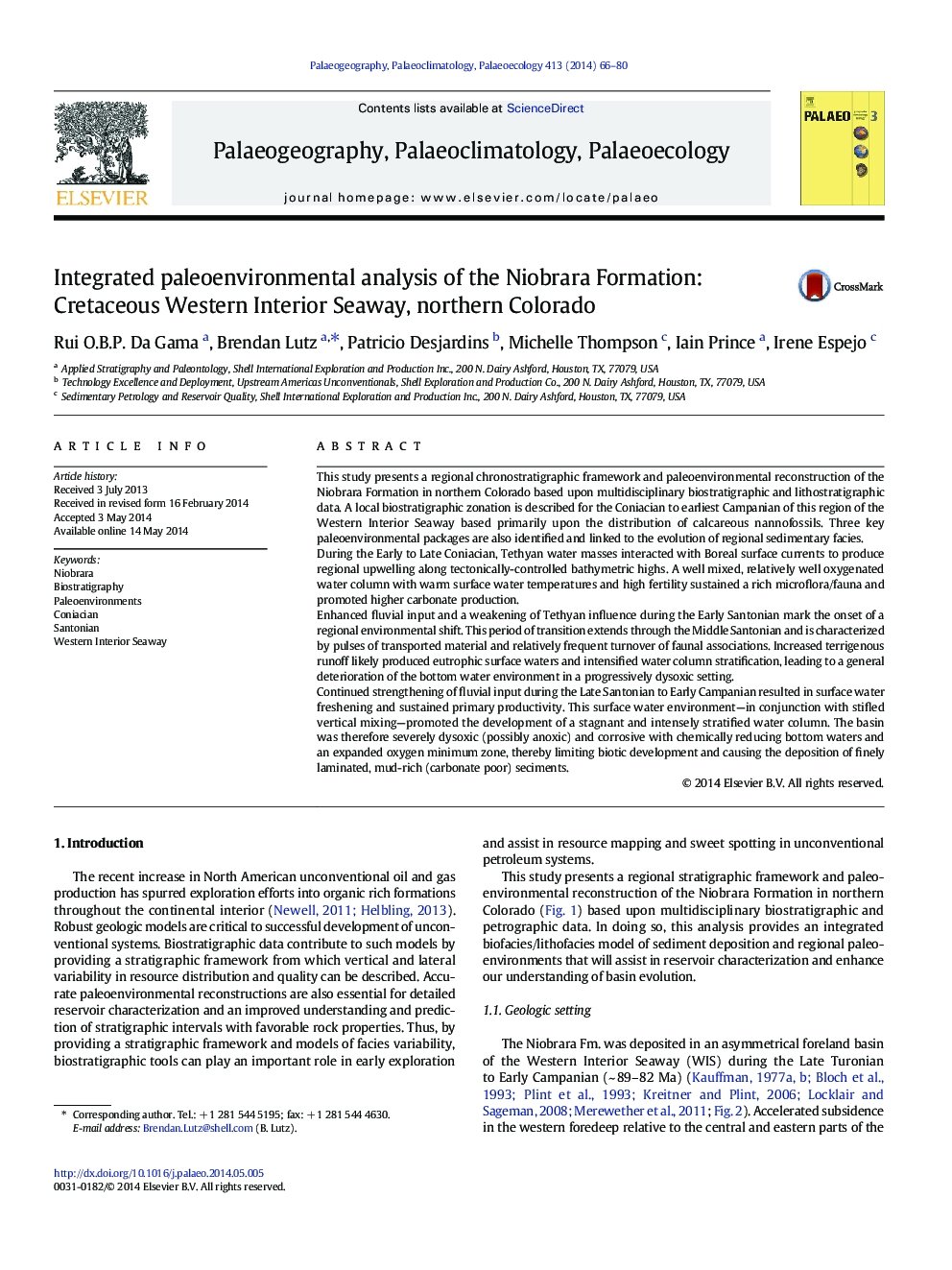| کد مقاله | کد نشریه | سال انتشار | مقاله انگلیسی | نسخه تمام متن |
|---|---|---|---|---|
| 4466146 | 1622177 | 2014 | 15 صفحه PDF | دانلود رایگان |
• Multidisciplinary biostratigraphic data outline paleoenvironments of the Niobrara Fm.
• The water column was warmer, well mixed, and well oxygenated during the Coniacian.
• Fluvial input increased and ocean structure shifted in the Early to Middle Santonian.
• The basin grew dysoxic and stagnant from the Late Santonian to Early Campanian.
• Environmental conditions influence the deposition of laminated mudstones vs. chalks.
This study presents a regional chronostratigraphic framework and paleoenvironmental reconstruction of the Niobrara Formation in northern Colorado based upon multidisciplinary biostratigraphic and lithostratigraphic data. A local biostratigraphic zonation is described for the Coniacian to earliest Campanian of this region of the Western Interior Seaway based primarily upon the distribution of calcareous nannofossils. Three key paleoenvironmental packages are also identified and linked to the evolution of regional sedimentary facies.During the Early to Late Coniacian, Tethyan water masses interacted with Boreal surface currents to produce regional upwelling along tectonically-controlled bathymetric highs. A well mixed, relatively well oxygenated water column with warm surface water temperatures and high fertility sustained a rich microflora/fauna and promoted higher carbonate production.Enhanced fluvial input and a weakening of Tethyan influence during the Early Santonian mark the onset of a regional environmental shift. This period of transition extends through the Middle Santonian and is characterized by pulses of transported material and relatively frequent turnover of faunal associations. Increased terrigenous runoff likely produced eutrophic surface waters and intensified water column stratification, leading to a general deterioration of the bottom water environment in a progressively dysoxic setting.Continued strengthening of fluvial input during the Late Santonian to Early Campanian resulted in surface water freshening and sustained primary productivity. This surface water environment—in conjunction with stifled vertical mixing—promoted the development of a stagnant and intensely stratified water column. The basin was therefore severely dysoxic (possibly anoxic) and corrosive with chemically reducing bottom waters and an expanded oxygen minimum zone, thereby limiting biotic development and causing the deposition of finely laminated, mud-rich (carbonate poor) seciments.
Figure optionsDownload high-quality image (205 K)Download as PowerPoint slide
Journal: Palaeogeography, Palaeoclimatology, Palaeoecology - Volume 413, 1 November 2014, Pages 66–80
